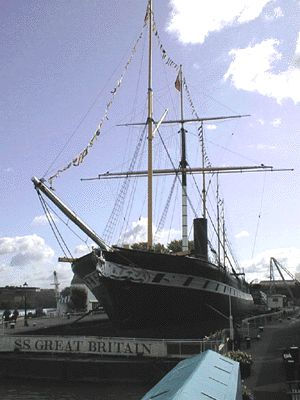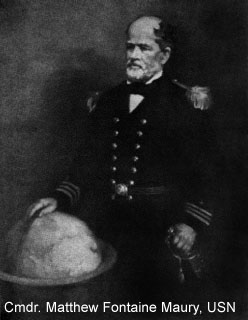|

Correct! Keep up the good work
 "Have you entered into
the springs
of the sea? Or have you walked in the
recesses of the deep? Job 38:16 (NAS)
"Have you entered into
the springs
of the sea? Or have you walked in the
recesses of the deep? Job 38:16 (NAS)
In Job chapter 38 and 39, God is asking Job a
number of rhetorical questions. God wasn't expecting Job to answer
these questions; rather, God was reminding Job of
how little mankind knew at that time about the
things that God had created.
Springs in the Sea
The existence of water springs in the
oceans were not discovered by scientists until
A.D.
1970 (just over 35 years ago). Although God
spoke to Job about them thousands of years ago, it
was impossible for man to see the springs as they
lie in some cases two or more kilometers below the
surface of the ocean.
Galapagos Rift (spreading ridge) off the coast
of Ecuador.

In A.D. 1977, scientists discovered hot springs
at a depth of over 8,000 feet, on the Galapagos Rift
(spreading ridge) off the coast of Ecuador. Since
the early 1970s, scientists had predicted that hot
springs (geothermal vents) should be found at the
active spreading centers along the mid-oceanic
ridges, where magma, at temperatures over 1,000°C,
presumably was being erupted to form new oceanic
crust. Also discovered near the springs were
abundant and unusual sea life -- giant tube worms,
huge clams, and mussels -- that thrived around the
hot springs.
Other Evidence from Oceanography:
Recesses in the Sea -
 The
Trieste in 1960: The
Trieste in 1960:
The existence of deep recesses in the ocean
was not fully understood until 1873
A.D.
(although they were mentioned thousands of years earlier in
Job 38:16).
For centuries before 1873, scientists believed
that the seashore was nothing but a shallow, sandy
extension from one continent to another:
"In 1873, a team of British scientists working in
the Pacific ocean found a "recess" 5 1/2 miles deep.
Later, another team of researchers discovered
another trench 35,800 feet deep (over 6 miles down).
Trenches now are known to be found in all three
major oceans, but the Pacific ocean is unique in
that it has a semi-continuous peripheral belt of
trenches and deep sea troughs. Extensive studies
have now been conducted on the Marianas Trench off
the coast of Guam. The bathyscaph Trieste has
traveled down almost seven miles into that trench.
The best known trench is perhaps the one off the
coast of Puerto Rico, with its deepest point known
as the Milwaukee Depth."(1)
The Hydrologic Cycle:

 Solomon
wrote in Ecclesiastes 1:7 -- "All the rivers flow
into the sea, yet the sea is not full. To the place
where the rivers flow, there they flow again." (NAS) Solomon
wrote in Ecclesiastes 1:7 -- "All the rivers flow
into the sea, yet the sea is not full. To the place
where the rivers flow, there they flow again." (NAS)
 Solomon
wrote in Ecclesiastes 11:3 "If the clouds are full,
they pour out rain upon the earth..." (NAS) Solomon
wrote in Ecclesiastes 11:3 "If the clouds are full,
they pour out rain upon the earth..." (NAS)
The prophet Amos wrote in Amos
9:6 "The One who builds His upper chambers in the
heavens, and has founded His vaulted dome over the
earth, He who calls for the waters of the sea and
pours them out on the face of the earth, the LORD is
His name." (NAS)
The water cycle (also called the Hydrologic
Cycle) is commonly understood in science today:
"The idea of a complete water cycle was not
fully understood or accepted until the sixteenth
and seventeenth centuries (A.D.). The first
substantial evidence came from experiments of
Perrault and Edme Mariotte. These scientists
demonstrated that the flow of the Seine River
could be accounted for by precipitation.
Astronomer Edmund Halley also contributed
valuable data to the concept of a complete water
cycle."(2)
The Bible had indicated a water cycle over 2,000
years before this time.
 Seaworthiness
of Noah's Ark Seaworthiness
of Noah's Ark
"Until 1858 (A.D.), the ark (Noah's ark) was the
largest sea-going vessel of which we have any
written record. In 1843 (A.D.), when Isambard K.
Brunnel built his giant ship, the Great Britain, he
constructed it to almost the exact dimensions of the
ark (a ratio of 30:5:3 -- the ark measured 300 cubit
in length, 50 cubits in width and 30 cubits in
height--Genesis 6:15). As it turns out, these
dimensions are the perfect ratio for a huge boat for
seaworthiness and not for speed. Shipbuilders during
World War II used that 30:5:3 ratio to build the
boat that eventually was nicknamed "the ugly
duckling" - a barge-like boat built to carry
tremendous amounts of cargo."(2)
USS Great Britain, launched in July 1843, now
preserved in her original building dock in Bristol,
U.K.
Paths in the Sea:
In the Book "Pathfinder of the Sea" written by
Commander Matthew Fontaine Maury, United States
Navy:
 Matthew
Maury undertook a research project based on
Scripture. Maury was in charge of the Depot of
Charts and Instruments in the Hydrographic
Office of the United States Navy from 1841-1861
(A.D.). One day in reading Psalm 8:3-8: "
When I consider Thy heavens, the work of Thy
fingers, the moon and the stars, which Thou hast
ordained; what is man, that Thou art mindful of
him, and the son of man, that Thou visitest him?
For Thou hast made him a little lower than the
angels, and hast crowned him with glory and
honor. Thou madest him to have dominion over the
works of Thy hands: Thou hast put all things
under his feet: all sheep and oxen, yea, and the
beasts of the field; the fowl of the air, and
the fish of the sea, and whatsoever passeth
through the paths of the seas." Maury
thought, "and if the Bible says it, I believe
it." He was also aware of Ecclesiastes 1:6,
which states: "The wind goeth toward the
south, and turneth about unto the north; it
whirleth about continually, and the wind
returneth again according to his circuits."
Maury, on the basis of the Bible, concluded that
there are well-established wind circuits, and
that there are literally "paths in the sea"
- that is, definite currents in the ocean. Matthew
Maury undertook a research project based on
Scripture. Maury was in charge of the Depot of
Charts and Instruments in the Hydrographic
Office of the United States Navy from 1841-1861
(A.D.). One day in reading Psalm 8:3-8: "
When I consider Thy heavens, the work of Thy
fingers, the moon and the stars, which Thou hast
ordained; what is man, that Thou art mindful of
him, and the son of man, that Thou visitest him?
For Thou hast made him a little lower than the
angels, and hast crowned him with glory and
honor. Thou madest him to have dominion over the
works of Thy hands: Thou hast put all things
under his feet: all sheep and oxen, yea, and the
beasts of the field; the fowl of the air, and
the fish of the sea, and whatsoever passeth
through the paths of the seas." Maury
thought, "and if the Bible says it, I believe
it." He was also aware of Ecclesiastes 1:6,
which states: "The wind goeth toward the
south, and turneth about unto the north; it
whirleth about continually, and the wind
returneth again according to his circuits."
Maury, on the basis of the Bible, concluded that
there are well-established wind circuits, and
that there are literally "paths in the sea"
- that is, definite currents in the ocean.
Maury reasoned that if these wind currents
and ocean currents could be located and plotted,
this information would be of great value to
marine navigators. Utilizing this information,
the sailing vessels could be directed along
routes that would take advantage of these sea
and air currents, reducing by many days the time
required to traverse the seas.
Maury found and plotted the wind circuits and
the ocean currents. The ocean currents include,
for example, the great Gulf Current - a "path
in the sea" forty miles wide and 2000 feet
deep flowing from the Gulf of Mexico up through
the Atlantic. This current has a tremendous
influence on the climate of England, Ireland,
Europe, and the Scandinavian countries. The
average winter temperature on the west coast of
Norway, for example, is about two degrees
centigrade, or two degrees above freezing.
Ordinarily, of course, we would expect far lower
temperatures for a country that far north.
Other paths of the seas that come to mind are
the California and the Japanese currents. The
California current brings cold water from Alaska
down along the California coast. As a result,
even those of us living in the San Diego area do
not have warm ocean water to swim in as they do,
for example, in the Hawaiian Islands. This cool
water, furthermore, dissipates tropical storms
that would otherwise push their way out of the
south Pacific into the southern California area.
As a result, California rarely receives rain in
the summer months. Maury's native state, the
State of Virginia, has acknowledged the great
debt navigation owes him, having erected
monuments to his memory. On these monuments may
be found a plaque that reads as follows:
"Matthew Fontaine Maury, Pathfinder of the Seas,
the Genius Who First Snatched from the Ocean and
Atmosphere the Secret of Their Laws. His
Inspiration, Holy Writ, Psalm 8:8, Psalm
107:23, 24, and Ecclesiastes 1:6."
Commander Matthew Fontaine Maury, United
States Navy "Pathfinder of the Sea."
Footnotes:
(1) In Defense of the Bible's
Inspiration, Bert Thompson, Ph.D., Apologetics
Press, 1999.
(2) Institute for Creation Research.
How could the Bible contain all these scientific
facts from oceanography thousands of years before
they were discovered by scientists?
Click on the next question to continue... |